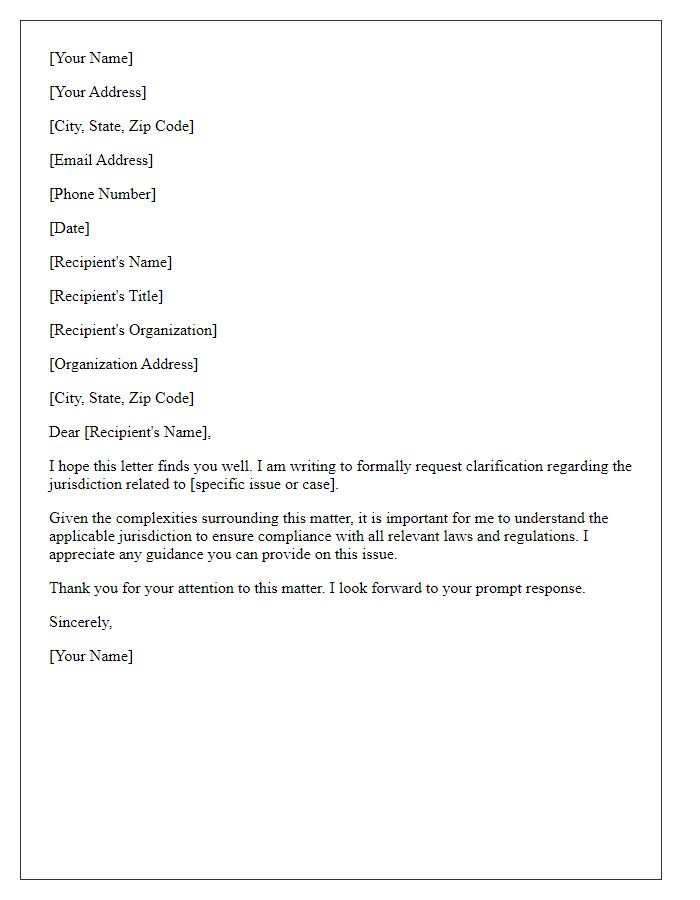In today's increasingly interconnected world, navigating cross-border disputes can feel like trying to solve a complex puzzle. With varying laws and cultures at play, it's essential to approach these challenges with clarity and precision. This article will guide you through effective strategies and practical tips for resolution. So, if you're looking to simplify the process and find a solution, read on to discover more!

Objective and Purpose
The objective of cross-border dispute resolution is to provide a structured framework for resolving conflicts that arise from international transactions or interactions, ensuring efficiency and fairness. This process aims to protect the rights of parties involved, whether individuals or businesses, and to uphold international laws and agreements. The purpose encompasses promoting amicable settlements through mediation or arbitration, rather than litigation, to minimize costs and time delays. The objective also emphasizes the need for impartiality, transparency, and adherence to relevant legal standards, ultimately seeking to preserve relationships between parties across different legal jurisdictions while providing a clear path for resolution.
Background and Context
In the realm of international business, cross-border dispute resolution has become increasingly vital due to the complexities of differing legal systems. Disputes arise in various industries, including technology, finance, and manufacturing, often involving parties from countries such as the United States, Germany, and China. The background of a specific dispute may center around contractual agreements, intellectual property rights, or shipment standards. For instance, the United Nations Convention on Contracts for the International Sale of Goods (CISG) plays a significant role in transactions between businesses located in different nations. Understanding cultural nuances, regulatory frameworks, and potential arbitration venues, such as the International Chamber of Commerce (ICC) based in Paris, is crucial for effective resolution. Additionally, the growing trend of alternative dispute resolution (ADR) methods, such as mediation and negotiation, provides more efficient and flexible options compared to traditional litigation, highlighting the significance of tailored approaches depending on the context of the dispute.
Legal Provisions and Agreements
Cross-border dispute resolution involves various legal provisions and agreements that govern international arbitration, mediation, and jurisdiction. The United Nations Convention on Contracts for the International Sale of Goods (CISG) establishes a legal framework for resolving disputes over commercial transactions involving goods between countries. The Hague Convention on Choice of Court Agreements emphasizes the enforcement of choice of court agreements across member states, ensuring that parties adhere to agreed jurisdictions. Bilateral investment treaties (BITs) often include dispute resolution mechanisms to safeguard foreign investments from expropriation by governments. Additionally, institutions like the International Chamber of Commerce (ICC) and the London Court of International Arbitration (LCIA) provide rules and guidelines for arbitration, facilitating fair and efficient resolutions. Understanding these legal elements is crucial for individuals and corporations engaged in cross-border transactions to protect their rights and ensure compliance with international laws.
Proposed Resolution and Remedies
In cross-border disputes, effective resolution requires a comprehensive understanding of jurisdictions involved, including legal frameworks of each country. Mediation, involving a neutral third-party mediator, can facilitate dialogue between conflicting parties, fostering an equitable outcome. Arbitration, legally binding and governed by international treaties such as the UN Convention on Contracts for the International Sale of Goods (CISG), presents an alternative, particularly for contractual disagreements. Proposed remedies may include monetary compensation, specific performance (fulfilling contractual obligations), or injunctive relief (court orders to stop certain actions). Timelines for resolution may vary significantly, often extending from a few months to several years, depending on the complexity of cases and the cooperation level of parties involved. Understanding local laws, such as those in jurisdictions like the United States or European Union member states, is critical for effective dispute resolution.
Future Collaboration and Monitoring
Future collaboration in cross-border dispute resolution requires establishing efficient communication channels and standardized protocols. Regular monitoring of ongoing cases ensures adherence to legal frameworks across jurisdictions, such as the United Nations Convention on International Trade Law (UNCITRAL) guidelines. Utilizing technology, like blockchain for securing transactions and artificial intelligence for data analysis, can enhance transparency and streamline processes. Training sessions for involved parties on cultural nuances and legal practices in specific countries, such as Germany and Japan, promote mutual understanding. Lastly, fostering relationships with international legal networks, such as the International Bar Association, can facilitate access to resources and expertise needed for effective dispute resolution.













Comments